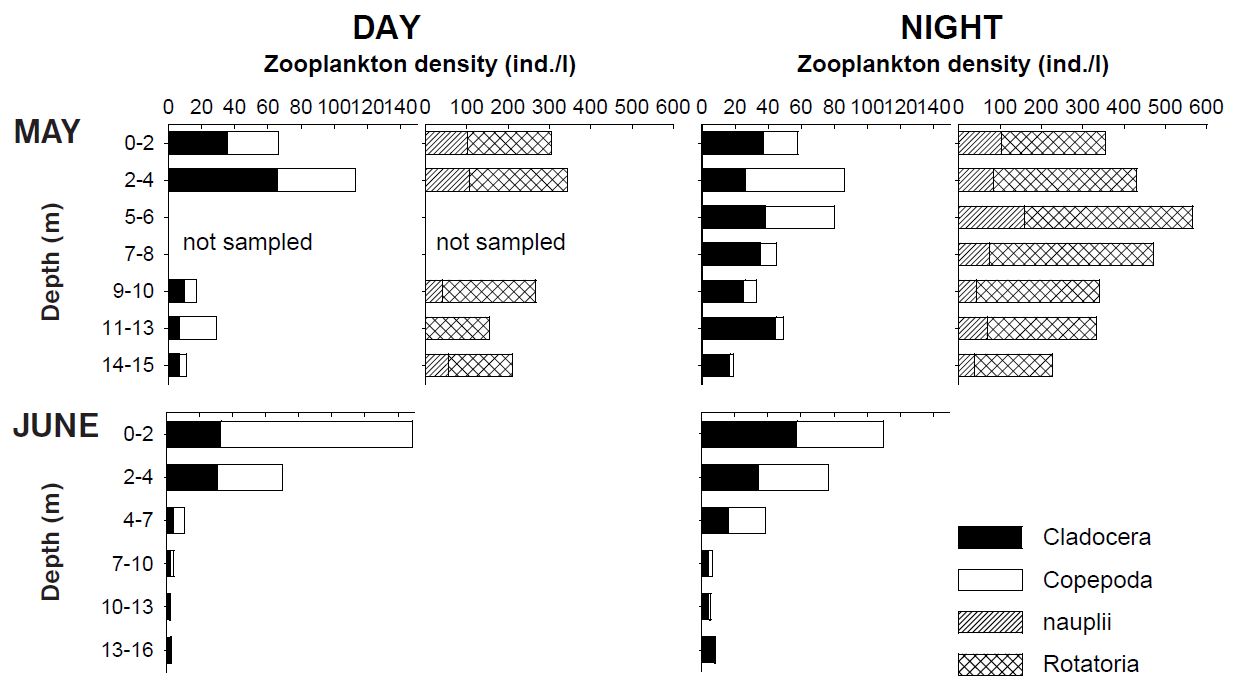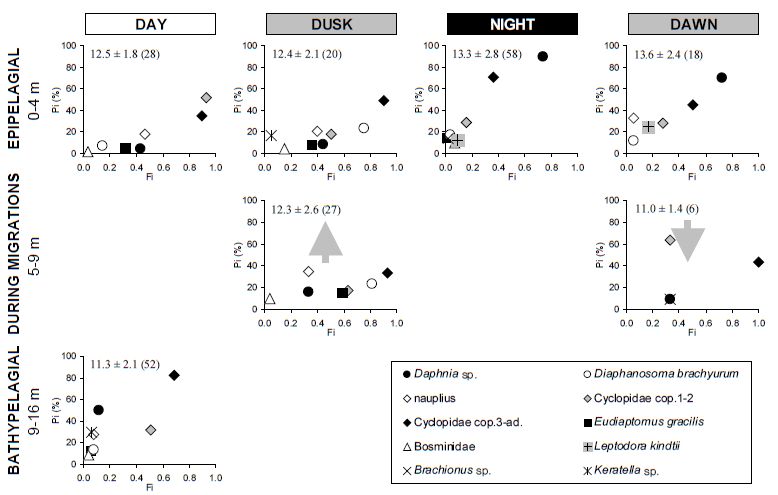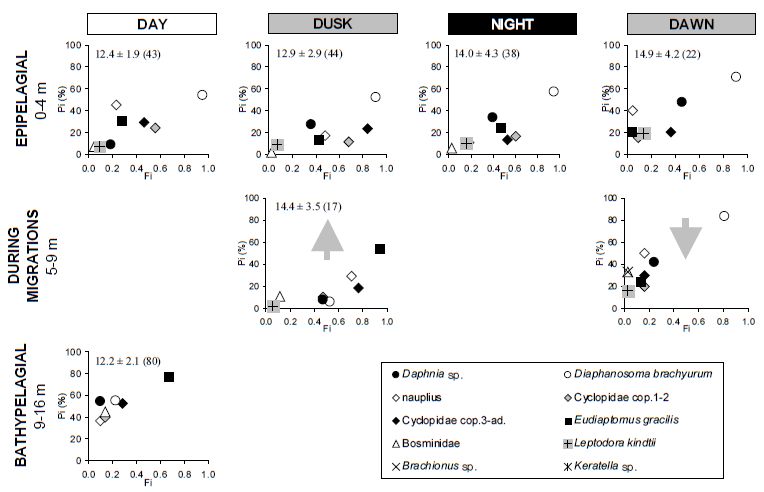Feeding behaviour of two functional groups of 0+ perch Perca fluviatilis (epilimnetic, staying all 24 hours in epilimnion; hypolimnetic, daily migrating between hypolimnion and epilimnion) were investigated in the deep canyon-shaped Slapy Reservoir (Czech Republic) during two 24-h periods in late May and mid June 2002. Densities of most favoured cladocerans and copepods were generally higher in epilimnetic than in hypolimnetic zones. The two 0+ perch groups fed predominantly on cyclopoid copepods during the daytime in May. In June, epilimnetic perch fed on cladocerans (Daphnia sp., Diaphanosoma brachyurum), whereas hypolimnetic perch preferred calanoid copepod Eudiaptomus gracilis. Throughout darkness, when nearly all perch occupied upper strata, their gut contents were clearly dominated by cladocerans Daphnia sp. and Diaphanosoma brachyurum in May and June, respectively. Digestive tract fullness (DTF) of hypolimnetic perch was 2.0-2.8-times lower than the DTF of epilimnetic perch, and a higher share of perch with empty digestive tracts was found in the hypolimnion. Maximum DTF occurred in the epilimnion during the day and/or dusk, whereas at night and dawn progressive evacuation of guts was recorded and migrants returned with low DTF back to the hypolimnion. Low zooplankton abundance, unfavourable light and temperature conditions in the hypolimnetic zone are suboptimal both for prey searching and for overall metabolic processes.
Keywords: 0+ fish; digestive tracts fullness; Slapy Reservoir; zooplankton



